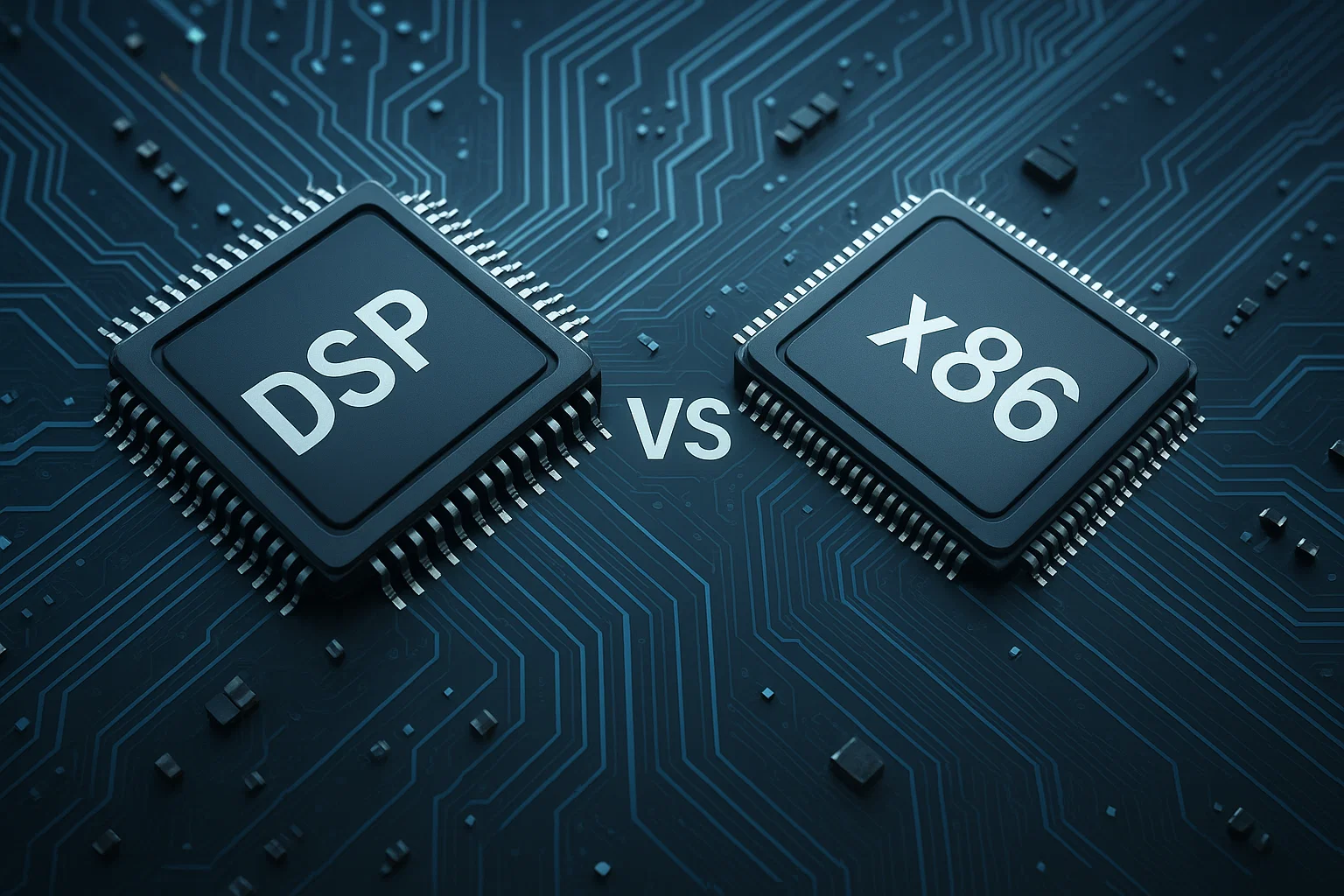
Digital Signal Processors vs x86 Architecture, What's the Different?
May 26 2025 
Inquiry
Global electronic component supplier AMPHEO PTY LTD: Rich inventory for one-stop shopping. Inquire easily, and receive fast, customized solutions and quotes.
QUICK RFQ
ADD TO RFQ LIST
Digital Signal Processors (DSPs) and x86 architectures serve different purposes and are optimized for different kinds of tasks.
Digital Signal Processors (DSPs) and x86 architectures serve different purposes and are optimized for different kinds of tasks. Here's a detailed comparison between the two:

Purpose and Use Cases
| Aspect | DSP (Digital Signal Processor) | x86 Architecture (General-Purpose CPU) |
|---|---|---|
| Primary Use | Optimized for real-time signal processing (audio, video, radar, etc.) | General-purpose computing (PCs, servers, laptops) |
| Common Applications | Audio processing, telecommunications, embedded systems, IoT, control systems | Desktop applications, web servers, games, productivity software |
Architecture Differences
| Aspect | DSP | x86 |
|---|---|---|
| Instruction Set | Often uses specialized instruction sets for SIMD (Single Instruction, Multiple Data) | CISC (Complex Instruction Set Computing) |
| Parallelism | High – many DSPs include hardware MAC (Multiply-Accumulate) units, SIMD, VLIW | Moderate – superscalar and SIMD (via SSE/AVX) |
| Memory Access | Often uses Harvard architecture (separate data and instruction memory) | Von Neumann architecture (shared memory) |
| Latency | Low latency for deterministic, real-time tasks | Higher latency, optimized for throughput and multitasking |
| Power Efficiency | Very efficient for repetitive, low-level signal operations | Less efficient for fixed-function tasks, but better for diverse workloads |
Programming and Software
| Aspect | DSP | x86 |
|---|---|---|
| Programming Language | Often uses assembly or C with specialized intrinsics | High-level languages like C, C++, Python, etc. |
| Compiler Support | Vendor-specific toolchains (TI Code Composer, Analog Devices CCES) | Broad support (GCC, Clang, MSVC, etc.) |
| Real-Time OS Support | Common (e.g., FreeRTOS, DSP/BIOS) | Possible but less typical (e.g., RTLinux) |
Performance
| Aspect | DSP | x86 |
|---|---|---|
| Real-Time Performance | Excellent, deterministic timing | Not guaranteed (due to caching, pipelining, etc.) |
| Floating Point | Historically limited, but modern DSPs often include FPUs | Strong floating-point support with advanced SIMD (AVX-512) |
| Throughput | Good for specific workloads (e.g., FIR filters, FFTs) | Better for multitasking, general-purpose performance |
Example Chips
-
DSP: TI C6000 series, Analog Devices Blackfin, Qualcomm Hexagon
Summary
| Category | Best Use Case |
|---|---|
| DSP | Embedded systems, real-time signal processing, power-constrained devices |
| x86 | PCs, servers, general-purpose computing, multitasking environments |
Related Articles
- ·How to Use DDR Memory with FPGA for DSP Application?
- ·Application of Embedded Systems in Aerospace and Defense Fields
- ·The application of embedded systems in the field of automotive electronics
- ·Comparison of FPGA, ARM, STM32, and DSP Platforms
- ·Comparison of FPGA, CPLD, PLC, Microprocessor, Microcontroller & DSP
- ·What is the difference between SoC, FPGA, and ASIC?
- ·The composition, functions, advantages, and disadvantages of FPGA
- ·Inventory of commonly used automotive MCU chip manufacturers and models
- ·Understand the differences between CPU, GPU, IPU, NPU, TPU, LPU, MCU, MPU, SOC, DSP, FPGA, ASIC, GPP, and ECU
Populer Posts
